Maintaining Momentum
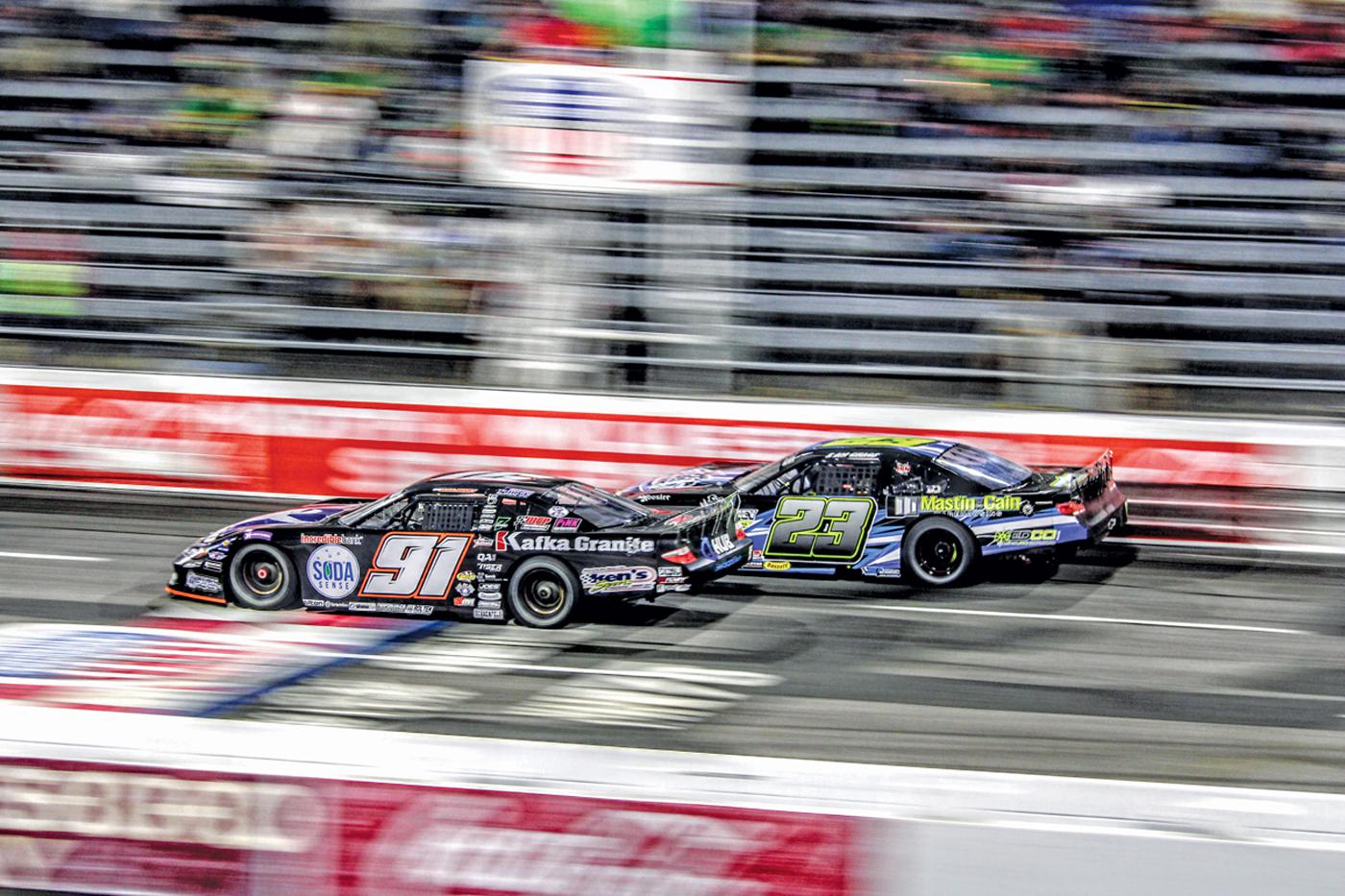
Photo courtesy of ASA STARS
Ongoing efforts to contain costs and level the playing field have helped to keep asphalt Super Late Models healthy over recent years, while rising visibility and increased cooperation between series is establishing the path ahead.
Asphalt Super Late Model racing has seen some significant changes over the past few years. As Jeff Munro of All American Speedway in Roseville, California, noted, what was once a fragmented landscape of rulesets, schedules, and events—particularly on the West Coast—has evolved into a more unified front thanks in part to the concerted efforts of touring series organizers.
“The Super Late Model stuff has really been narrowed down recently,” Munro observed. “At this point we’re basically down to one group—SRL (StockCar Racing League)—that’s now doing this on the West Coast, and they’re hosting a national series. That has really brought things together in terms of rules package continuity with the rest of the country. It’s healthier to have one bigger group on the West Coast to spearhead the effort.”
That organizational consolidation also made it easier for Munro to introduce the Wild West Super Series as a way to offer local racers additional opportunities to get on track. “Last year we did a little four-race season at All American Speedway with the same rule package. Among the folks who race with SRL, there are probably a dozen of them who are based right in our backyard, so we wanted to put something together where they could race close to home. And we purposely set up our schedule to avoid any overlap with the other races. There are also strong indicators that some of these race tracks are going to change hands in the near future for various reasons, and those changes will likely bring even more alignment amongst the series.”
While these developments are encouraging for West Coast racers, Munro also quickly added that trends established in the Midwest and eastern regions of the country have really dictated the direction that the Super Late Model segment has taken on the whole.
Refining The Formula
As is the case with many motorsports disciplines, one of the biggest challenges that has faced Super Late Model organizers has been the need to find an agreeable middle ground between cost containment and innovation. As racers continue to incorporate increasingly sophisticated technologies into their programs, sanctioning bodies are often forced to react. If they don’t, they run the risk of driving away those without the financial means to do the same.
“Teams are getting smarter and smarter at a very rapid rate,” said Tim Bryant of Five Flags Speedway, Pensacola, Florida. “It’s a very intelligent bunch racing in Super Late Model, and with the advancement of technology, it’s getting tougher and tougher to stay on top of it. Tech crews across the country are challenged way beyond where they used to be. They have to try to stay ahead of those advancements as well as the loopholes that these really smart crew chiefs are continuously looking for.”
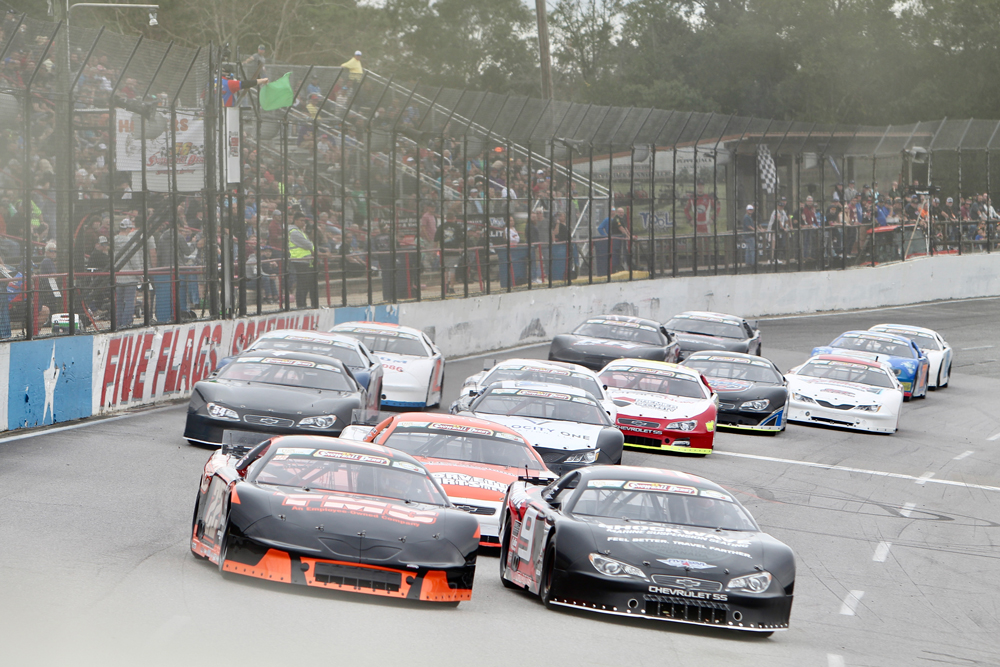
Those loopholes are often related to aerodynamics, Bryant said. “It really starts with the bodies. We’ve got a lot of what we call ‘North Carolina influence’ in Super Late Model racing these days. These teams are very clever when it comes to aero, and many of them have wind tunnel access. They find ways to tweak the bodies—and we’re talking about template body racing here. But small changes can make a big difference, so some folks will take a look at every template we have and find an area on the car where there isn’t a template and find some way to gain an advantage. We’re always looking for ways to keep that reeled in and keep the racing fair. I think we owe it to the smaller teams that don’t have those resources.”
Meanwhile Bob Sargent of the ASA STARS National Tour in Macon, Illinois, told us that greater cooperation between sanctioning bodies has resulted in a tangible effect on the costs faced by traveling teams. “Before we started seeing this effort to establish common ground between the series and tracks, there were some things that were getting out of hand and hurting the sport. Tires have always been a big concern—the amount of tires that the teams have been using, and the different tires that different regions have been using. It really starts to add up when it comes to costs. We’ve been putting a lot of focus into addressing that.”
Larry Collins of the SRL National Super Late Model Tour in Bakersfield, California, said that his series sought to replicate many of the successful organizational strategies that have been implemented in dirt racing. “Wherever you run a dirt late model, it’s pretty much the same set of rules and they’re enforced in the same way, so there’s consistency. The idea is pretty straight-forward: We wanted to ensure that teams could travel from one of our events to another series’ event and not have to make significant changes to the car in order to be competitive. So, a while back Ricky Brooks and I started working to unify the Super Late Model rules here on the West Coast and worked with series back east to make sure these traveling teams would be able to compete over there, too. That was a big accomplishment for us, and since then we’ve seen a lot more cars traveling the country and hitting those big events.”
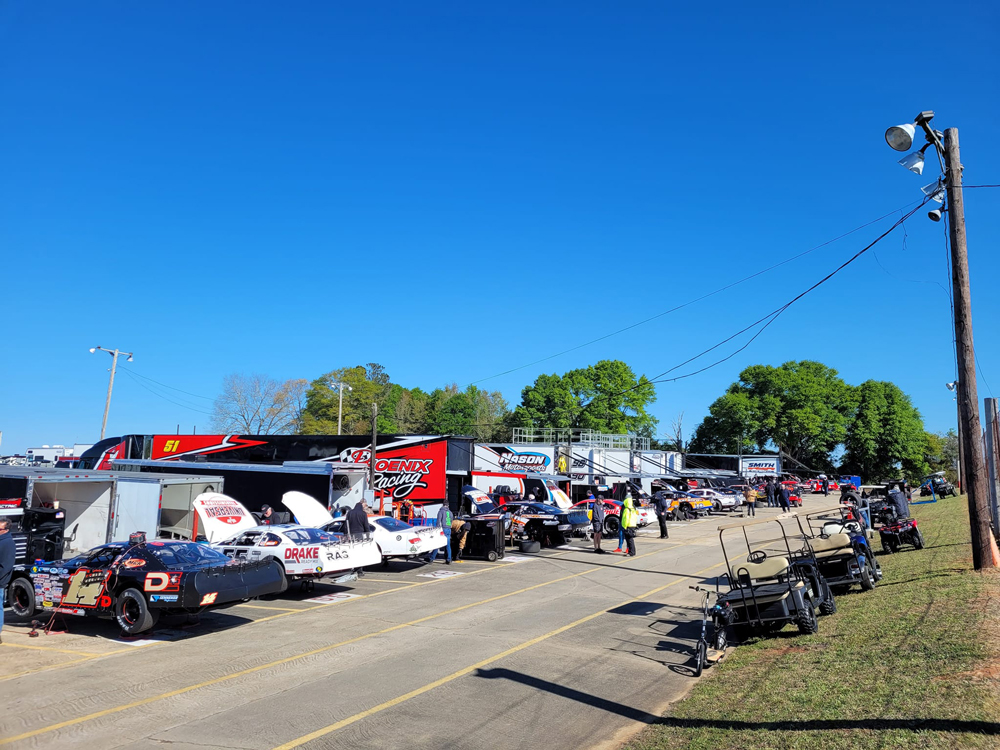
Collins also noted how often NASCAR Cup series drivers are using Super Late Model racing to hone their skills outside of their primary racing endeavors, while more and more young drivers are looking at the discipline as a steppingstone into the upper ranks of motorsports.
“The Cup series teams like to come out to the weekday events as a way to stay sharp,” he explained. “We’ve heard from those teams that these Super Late Models are similar to the current Cup car from a drivability standpoint, and their participation keeps fan interest high. We have a lot of strong teams that are willing to travel and hit the big events as well, while in the past some of the bigger teams might’ve just focused on chasing points in one particular series. But we’re also about the veteran drivers like Bubba Pollard who have been in this sport for a long time and will continue to be involved in the sport. And we have these young up-and-coming drivers who are an integral part of it, too. They may not have the name recognition that the veterans have, but they have the talent, and a lot of them are looking at these marquee events as a way to elevate their visibility.”
The Balancing Act
As sanctioning bodies have worked to establish a consistent ruleset and contain costs throughout the country, the sealed engine package has become the power plant of choice for the majority of teams in asphalt Super Late Model racing. These 350-cubic-inch Chevrolet small block-based power plants are supplied by approved builders like Hamner Performance and Progressive Racing Engines, but some teams are also allowed to build a Southern Super Parts Engine (SSPE) from an approved list of components.
“It’s almost like a spec motor—anyone can build it,” said Bryant. “It has cost ceilings on individual parts, and there’s also a claim on that engine, which is currently at $24,000. Like the bodies, some of these folks are finding ways to squeeze more power out of these components, but we had sealed engines win races in 2023, so the rules are pretty close. And occasionally we will pull engines after a race and take them to an authorized engine builder to do back-to-back dyno testing on the different engine packages just to make sure that we still have parity.”
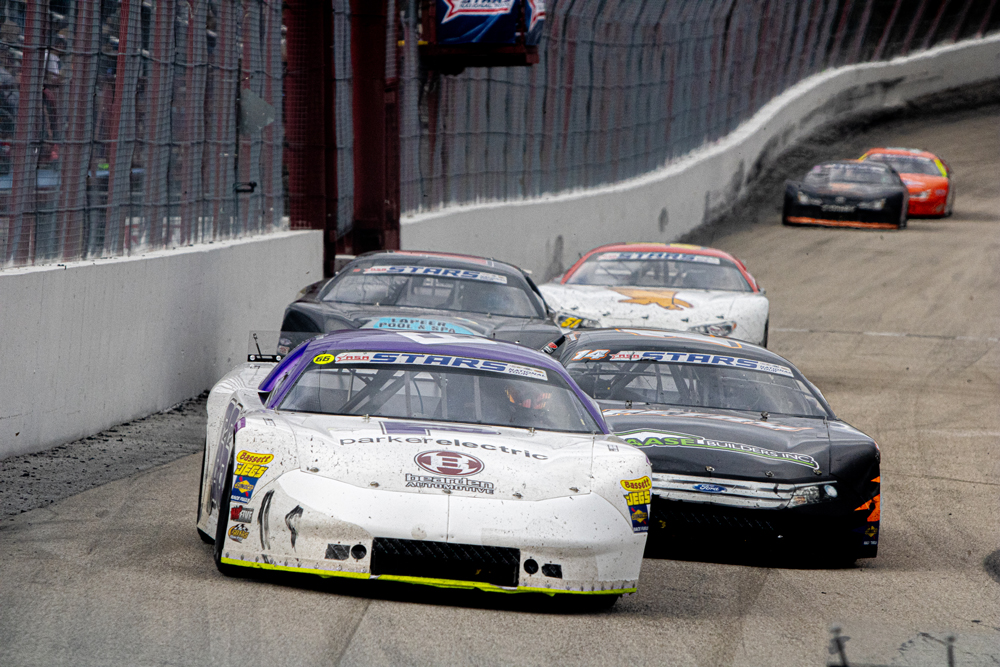
Bryant explained that sanctioning bodies are trying to keep significant year-over-year rule changes to a minimum as a general rule of thumb. “To some degree, constant changes frustrate the racers. One thing we hear from them is, ‘Quit trying to save us money. Every time you do, you end up costing us money!’ So we’re cognizant of that.”
With that in mind, the majority of tweaks for 2024 have focused on safety, like requiring steel roll bars on the right side of the car rather than aluminum, minimum thicknesses for aluminum bumpers, and steel plate protection on the front and back of the fuel cells. But there are a few rule tweaks that could affect performance more directly, too.
“We’re now requiring mufflers on the cars,” Bryant added, as “many of the tracks have adopted pretty stringent noise regulations. On the engine side, we’ve disallowed a specific oil pump—a very high-dollar piece on a dry sump engine—and we had a valve spring change for 2024. They’re relatively minor changes done in the interest of costs.”
Although it isn’t required, the ASA STARS National Tour is urging its competitors to use a 750-cfm four-barrel carburetor going forward. The 750 has long served as the standard for many events throughout the country, and series organizers are hoping to streamline things in the interest of parity and simplicity.
“It’s the carburetor of preference,” Sargent said. “What we’ve seen is that different sanctioning bodies and different tracks have tried to design rules so that it would give a lot of different carburetor options an equal playing field, but that’s very difficult to achieve, so we want to focus on the 750. We think that’s the best way to keep the playing field level for everyone at every event that they go to.”
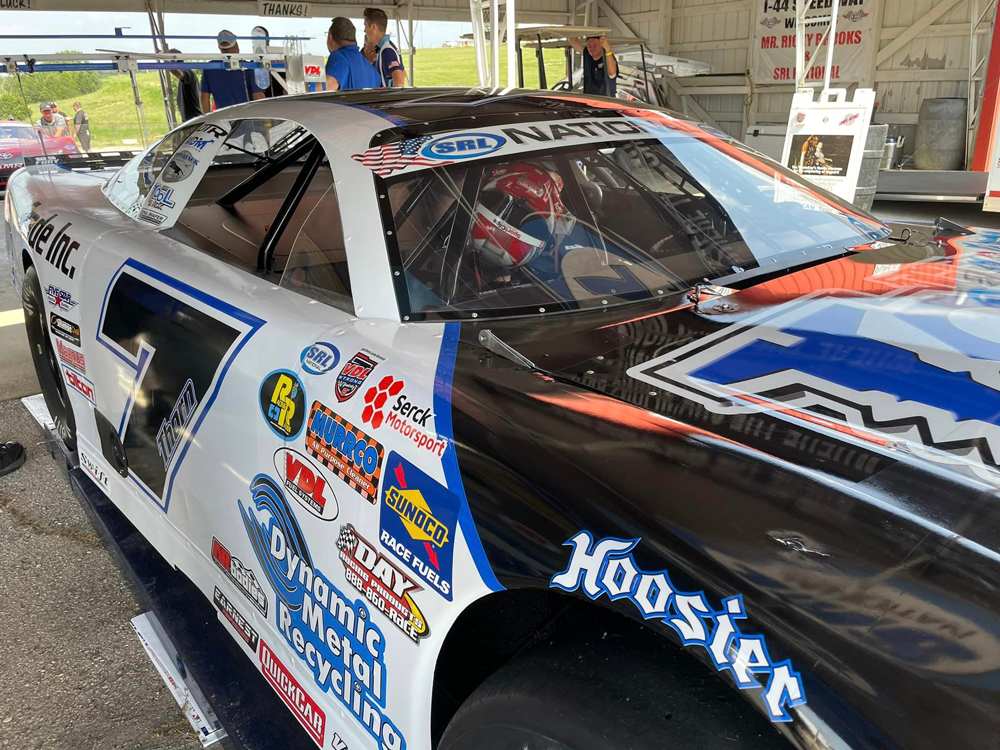
The introduction of a common Hoosier tire for asphalt Super Late Model racing follows a similar strategy of simplification in the interest of continuity and cost containment. “I think that will be healthy for the sport,” Bryant observed. “This is something that the racers have been asking for. When someone can go to a race track, unload their car, and do some practicing on the tires that they used at the last race—whether that was with the same series or a different one—they are going to save a lot of money over the course of the season.”
Keeping The Pace
Although ongoing challenges exist for sanctioning bodies and event organizers, there’s a near-universal sense of optimism about the future of asphalt Super Late Model racing.
“Right now, there’s this trend of promoters and tracks one-upping each other with bigger and bigger payouts and things like that,” said Munro, who predicted December’s Snowball Derby was on track to be one of the largest events in Super Late Model history, when interviewed just prior to the event. “It seems like a lot of it is being inspired by what’s going on in the dirt world—events like the Eldora Million, where those drivers are racing for a million dollars to win. I think a lot of folks in asphalt Super Late Model want to get these events into that realm.”
With an increased presence through streaming services like FloRacing, that level may be within reach sooner rather than later. “The amount of exposure that’s available even at the local level is unprecedented,” Collins said. “The streaming services have been a game changer in terms of how people follow the sport, and how fans can access the races even if they can’t get to the track. When it was first introduced, people had mixed feelings about streaming. There were concerns about it hurting ticket sales and that kind of thing. But it’s part of the sport now, and as far as we’re concerned, the results have been overwhelmingly positive. It creates more exposure for our teams and our events.”
Bryant cited another similarly important trend as well. “The developmental teams are coming. The drivers have gotten younger. A lot of that goes back to karting and quarter-midget racing. These kids are getting a really early start, and by the time they’re 13 or 14 years old, they’re ready to step into a Late Model. We’re seeing a lot of that, and many of them have their sights set on the higher levels, so they want to run the marquee events and make a name for themselves. That used to be kind of an anomaly in this type of racing, but it’s almost becoming the norm. I think that as long as the economy stays healthy and there’s funding out there for these younger drivers, it’s a trend that’s going to stick around for a while, and we’ll see even more of it.”
Sources
All American Speedway
allamericanspeedway.com
ASA STARS National Tour
starsnationaltour.com
Five Flags Speedway
5flagsspeedway.com
SRL National Super Late Model Tour
srlsouthwesttour.com
 MEMBERSHIP LOGIN
MEMBERSHIP LOGIN JOIN PRI
JOIN PRI


